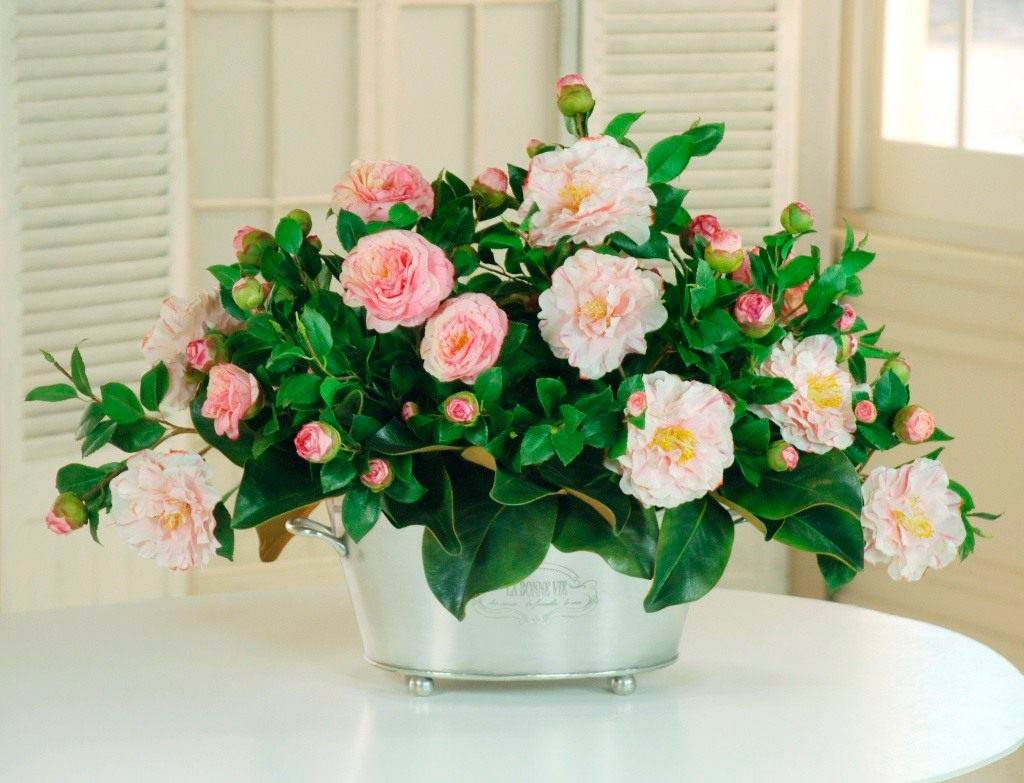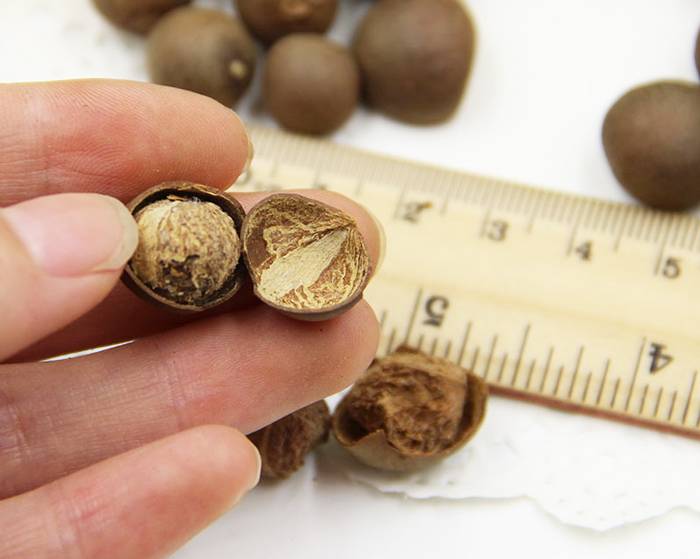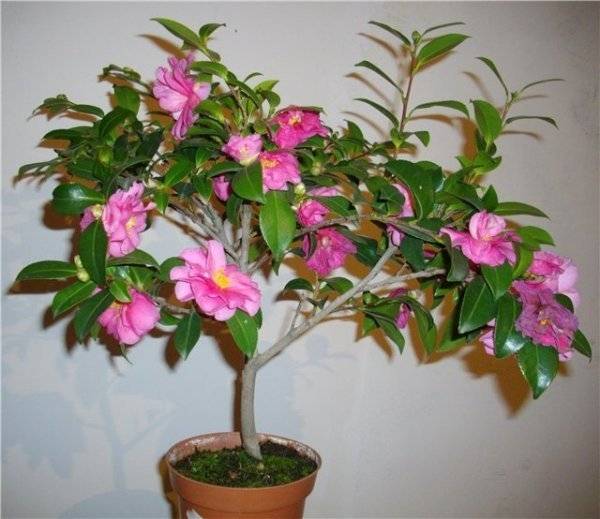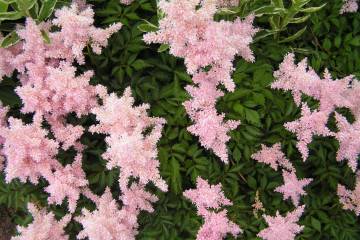Camellia flower - Japanese, red, Chinese white
Content:
Camellia is a fairly well-known flower that many consider indoor. This plant belongs to the Tea family and grows in most cases in the southeastern countries. In honor of this flower in Turkey there is a hotel in Side "Camellia K Club", the creator of which was inspired by this plant.
Camellia flower - description
Camellia is an evergreen flower. This plant has leathery elliptical leaves of dark green color, folding along the central part. Their size can vary from 3 to 17 cm in length, depending on whether it is a tree or a bush.
The origin and appearance of camellias
Camellia, which is a tree, in garden conditions can reach 20 m in height, and a bush - only 1.5 m. The flowers of this plant resemble roses, thanks to which the camellia has gained popularity among gardeners.
Inflorescences can be from 6 to 14 cm in size, up to 7 petals, the color of which, depending on the species, can be pink, white or red. Most varieties do not have any scent, which makes them unfavorably different from roses, which exude a pleasant aroma.
A flower appeared in Europe only in the 18th century, where Georg Joseph Kamelius brought it, in whose honor the plant was named.
Description of camellia flowering
Camellia blooms in late autumn or early winter, and lasts about 3 months. Large single flowers, located on pedicels, live for 3-4 weeks. The diameter of each inflorescence is up to 13 cm, they have an oval or round shape with a wavy edge. In the center there is a large number of yellow stamens, which have a large anther. Flower petals can have a monochromatic coating or variegated.
Types and varieties
Camellia has about 250 species, each of which has distinctive features. Depending on individual preferences, each grower can choose his own type and variety of flowers for growing at home.
Japanese camellia
The most popular flower for home breeding is the Japanese camellia, which is distinguished by its unpretentiousness. This type of shrub is quite spreading and can be up to 1.5 m in height. When it comes to a tree, it can be up to 6 m tall.
The stems have a smooth gray bark. The dark green leaves are bent in the center on the obverse. The beginning of the flowering period is November or May, a shrub or tree is completely covered with flowers, which, depending on the species, have a different shade. Oriental medicine uses camellia as a means of fighting cancer.
Alba
One of the popular varieties of Japanese camellia is Alba, the white flower of this plant has 5-7 petals. In the central part of the bud, yellow long stamens are also located.
Winter rose
Japanese camellia varieties Winter rose has large buds of pale pink or white. The number of petals is up to 25, there is no noticeably pronounced core. This variety resembles a rose more than others.
Chinese Camellia (Sinensis Camellia)
The Chinese camellia is a bush variant that grows in China, Southeast Asia. She loves forest edges and glades, has a height of up to 15 meters, a branching stem with a gray rough bark. The leaves of this plant variety reach 10 cm, have a short petiole and an elliptical shape. The edges of the leaf have small teeth.
This type of camellia has white flowers with 5 petals that hang down on short stalks. The diameter of the inflorescences reaches 4 cm, and the central part is represented by yellow stamens, which make up most of the volume of the flower. In Russia, the most optimal conditions are in the Kursk region and the Moscow region.
Other types of this flower are used exclusively for decorative purposes. Chinese camellia also has beneficial properties: it is used to create perfumery fragrances, as an antiseptic, in soap making and confectionery.
Camellia Sasankva (mountain)
The plant is frost-resistant, therefore varieties bred by selection are most hardy to negative temperatures. The most popular hybrids are Empress, Cleopatra, Bicolor and Chansonnier. They can be grown even in the cold regions of Russia - in the Tyumen region.
Camellia Sasankwa is intended for growing outdoors - it grows mainly on the slopes of the islands of Japan. However, even in an individual pot in the room, this plant will take root and multiply. This type of camellia can be called red, since the lignified part of the shrub has a reddish tint.
Bicolor
This variety of Sasanqua camellia looks unusual. Each petal has a two-color color: pink prevails at the edges, and the base is snow-white.
Chansonier
This hybrid is distinguished by double flowers, which are most often pale pink or white.
Cleopatra
Camellia of the Cleopatra variety, named after the great queen, has a rather unremarkable appearance. The flowers are simple corollas with sparse and long petals. This is a fairly sophisticated bud with a bright yellow core.
Transplant after purchase into a pot
It is recommended to buy a flower from official suppliers who are engaged in the selection of this plant in certain regions of the country. In this case, there will be no doubt about the quality of the resulting product. The description on the site does not always give an accurate idea of what can be obtained as a result. Therefore, if there are shops in the city, it is better to buy cuttings there.
What is needed for landing
Before planting, it is worth preparing the soil yourself. To do this, you need to take 2 parts:
- peat;
- leafy land;
- coniferous land;
- vermiculite.
To this composition, you must add 1 part of sand and half of the bark of evergreen trees. Such soil is rather loose, breathable and slightly acidic, and therefore ideal for growing camellias.
Humidity and temperature
Humidity is of particular importance for the flower as it grows in the subtropics. It is recommended to spray them with a spray bottle several times a day, and in winter time to install a humidifier in a room with flowers. In this case, it is worth removing large drops from the petals, since they may cause the plant to stop blooming.
From the beginning of autumn, it is required to transfer the flower to a colder place, where the temperature is at least 10 degrees. In the summer, it is worth taking a flower pot with a camellia out into the fresh air: in the garden or on the balcony.
Step-by-step planting process
It is recommended that you select a pot with a drainage position at the bottom. Also, for the normal life of the flower, drainage holes are needed at the bottom of the container in which it will grow. This is important so that excess moisture does not stagnate at the roots, but can safely leave.
Landing order:
- Pour the previously prepared substrate over 2/3 of the total volume of the pot.
- Place the plant in the middle and gently spread the roots (they are weak enough, be careful).
- Top up the substrate.
It is recommended to ensure that the root collar of the plant is above the ground, and not drowned in it. It is also required to water the plant after planting, subsequently pouring out excess water from the pan.
Reproduction
It is not difficult to propagate camellia even at home. This procedure can be carried out by separating cuttings or by growing from seeds. The second method is more time consuming and labor intensive.
Seeds
This method requires:
- Take an acidic medium (peat is suitable).
- Pour boiling water over the seeds, cut off the shell and make a cut.
- Plant the seeds into the substrate in a wide plastic glass.
- Cover the seeds with a substrate from above by no more than 5 mm, and pour 1 cm of perlite on top.
When the sprouts appear, it is necessary to make a pick of the plant, and after 2 weeks - start feeding them. When the roots have grown, it is worth replanting the plant in an individual pot.
Cuttings
This breeding method is simpler. It is required to use it if you want to preserve the characteristics of a certain plant variety. To do this, you need to cut off the tops of green shoots, prepare seedlings 8 cm long. Each cutting should have at least 2 leaves.
The leaves themselves can be cut in half so that the evaporation of moisture occurs in a smaller volume. It is recommended to treat the cut line with a rooting accelerator. Then you need to place the cuttings in a substrate, the temperature of which is about 24 degrees Celsius. It will take a month for rooting - then the plants can be planted in individual pots.
Room care
Camellia can rightfully be considered the star of all domestic plants. It is often quite capricious about the environment in which it is grown, since it grows in a different climate. In order for the plant to delight with its beautiful flowering, it is required to create optimal conditions for it, and therefore the camellia flower requires some care at home.
Watering mode
Care for the plant is required carefully - do not allow the soil to dry out. Moreover, the higher the air temperature, the more often it needs to be produced. It is not recommended to allow stagnation of water in the pan, as this may cause the flower to stop growing.
Top dressing
Fertilizers for this flower are of particular importance. It is required to feed during the active growth of the plant. Therefore, fertilizer should be applied twice a month from April to August. In August, feeding is recommended to stop introducing, this is necessary in order for the buds to begin to form.
Features of care during the flowering period
During the flowering period, it is worth keeping the plant in partial shade, as direct sunlight can interfere with the process. Watering the plant during this period is required without drying the earth. Protect the plant from drafts.
Features of care during the rest period
Camellia needs to be fertilized after the end of flowering.Watering in this case should be done less often - it is necessary that the earthen lump dries easily between procedures. Pruning is done during the dormant period of the plant.
No matter how much you like camellia, the flowers do not appear on it often enough, but they delight in that period of the year when you need them most. A capricious home flower requires some care, so do not neglect the rules listed above.





















